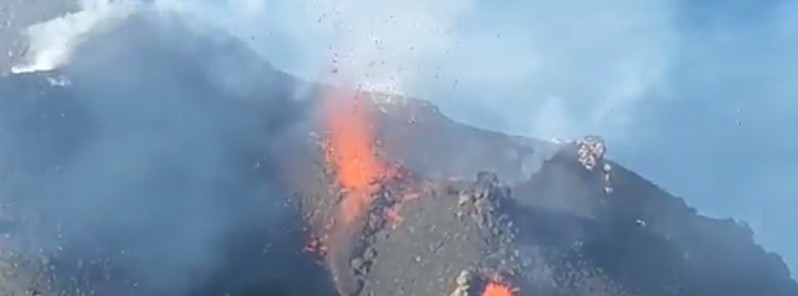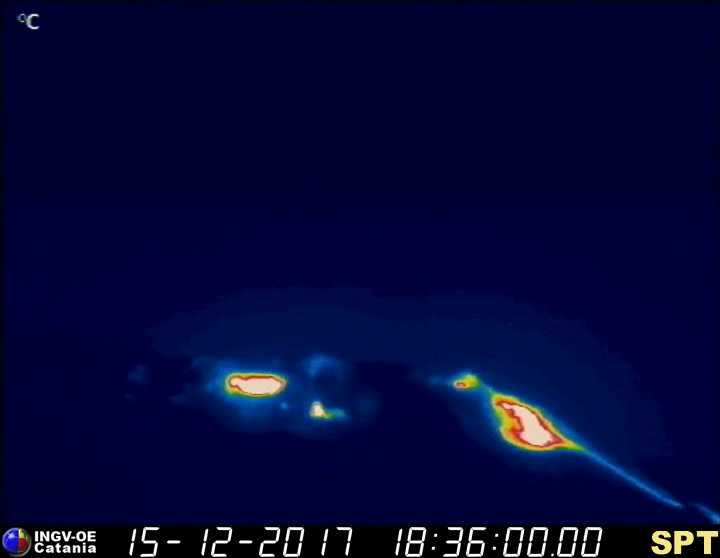Strong explosions, lava overflow from Stromboli’s NE crater, Italy

At least two 'stronger than usual' explosions took place at Italy's Stromboli volcano over the past 24 hours.
The first explosion took place at 01:30 UTC (December 15) and the second around 10:30 UTC. "A gigantic cloud of smoke was visible from the other islands of the archipelago," La Stampa reported.
Activity is still intense and lava began overflowing the northern edge of the N1 crater depression and pouring over the upper part of Sciara del Fuoco.

Credit: INGV-OE Catania
Mayor Marco Giorgianni said he is in constant contact with volcanologists and assured the population that the situation is under control. "There were two stronger than usual eruptions with lava overflow that ended in the sea and unleashed the giant cloud," he said, adding that residents are all well.
Frequent detonation waves were reported throughout the day.

Video courtesy INGV
According to LGS, a sudden increase in all monitored parameters started at the volcano at 10:40 UTC. The seismic tremor is very high and is accompanied by a sharp increase in infrasonic pressures. The activity is also associated with a strong SO2 emission.
Geological summary
Spectacular incandescent nighttime explosions at this volcano have long attracted visitors to the "Lighthouse of the Mediterranean."
Stromboli, the NE-most of the Aeolian Islands, has lent its name to the frequent mild explosive activity that has characterized its eruptions throughout much of historical time. The small, 924-m-high (3 031 feet) island is the emergent summit of a volcano that grew in two main eruptive cycles, the last of which formed the western portion of the island.
The Neostromboli eruptive period from about 13 000 to 5 000 years ago was followed by formation of the modern Stromboli edifice. The active summit vents are located at the head of the Sciara del Fuoco, a prominent horseshoe-shaped scarp formed about 5 000 years ago as a result of the most recent of a series of slope failures that extend to below sea level.
The modern volcano has been constructed within this scarp, which funnels pyroclastic ejecta and lava flows to the NW. Essentially continuous mild strombolian explosions, sometimes accompanied by lava flows, have been recorded for more than a millennium. (GVP)
Featured image: Strong explosion at Stromboli volcano, Italy on December 15, 2017. Credit: INGV

Commenting rules and guidelines
We value the thoughts and opinions of our readers and welcome healthy discussions on our website. In order to maintain a respectful and positive community, we ask that all commenters follow these rules.